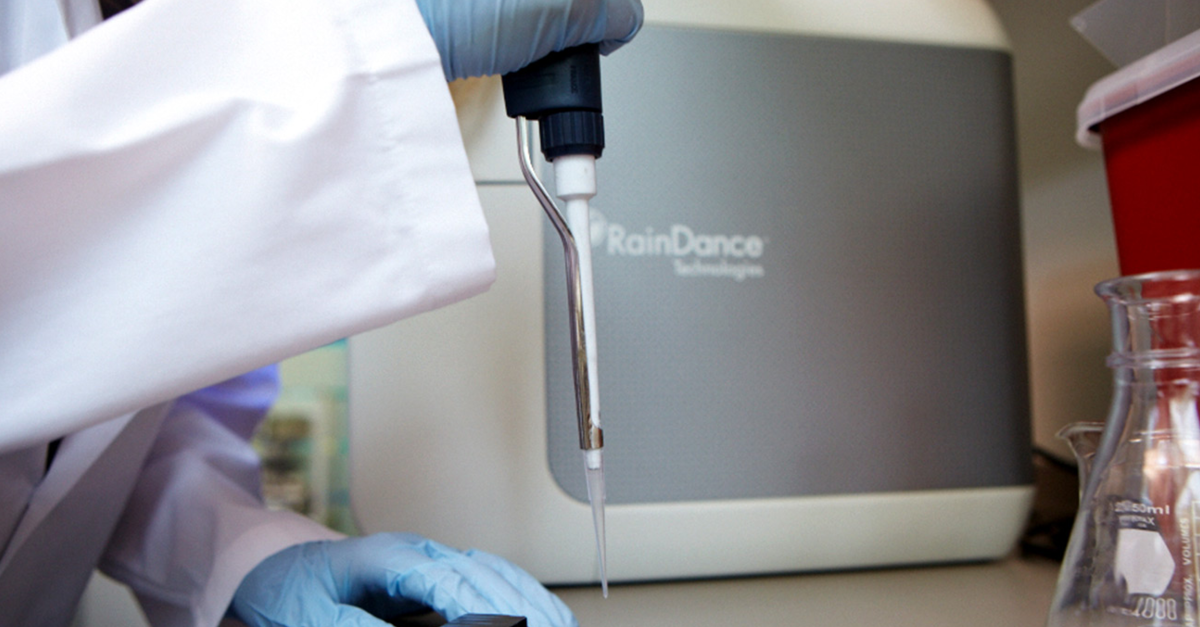EPAM Continuum worked with RainDance technologies to develop the RainDrop™ Digital PCR System, a technology that detects minute amounts of mutated DNA within a single blood sample, providing the potential for much earlier detection of tumors throughout the body.
RainDance: RainDrop Digital PCR Service

CATEGORY
Key Challenges
Since the 1980s, molecular biologists and researchers have used a technology called Polymerase Chain Reaction (PCR) to perform a variety of genetic tests, including analysis of biopsies to test for cancer. The sensitivity of these tests is limited. Conventional PCR detects mutant-to-normal DNA in ratios of approximately 1/1000, while a single human tissue sample contains millions of DNA strands.
The next generation of this technology—called digital PCR—offers more precise mutation detection by breaking each DNA sample into minute droplets, which are then analyzed individually. In 2011, RainDance Technologies approached EPAM Continuum with a picodroplet platform that could enable researchers to perform a highly sensitive form of digital PCR. Early in the program, RainDance had demonstrated the fundamentals of the technology using experimental techniques in the lab. The next objective: Bring this technology to market as a cost-effective, easy-to-use bench-top system.
Solution Highlights
Together, EPAM Continuum and RainDance Technologies developed the RainDrop™ Digital PCR System—the most sensitive bench-top bio-detector on the market today. A breakthrough in cancer research, this technology can detect multiple mutations within a single DNA sample, providing great insight into the mutations associated with the disease.
The Results
Research institutions around the world use the RainDrop System to advance scientific understanding of cancer and search for a possible cure. To date, RainDance has shipped over 100 RainDrop instruments.
Digital PCR could deliver on the promise of a “liquid biopsy”—meaning that doctors could test for the existence of cancer cells anywhere in the body with only a blood sample, as opposed to extracting a tissue sample from a suspected tumor. There is hope that, in the future, doctors will use this highly-sensitive, minimally-invasive digital PCR technology to monitor cancer therapy. It may also offer the possibility of early cancer detection, if applied as a tool for pre-emptive screening.
You can find the original case study from EPAM Continuum here.
GET IN TOUCH
Hi! We’d love to hear from you.
Are you ready to design the business models of tomorrow?


